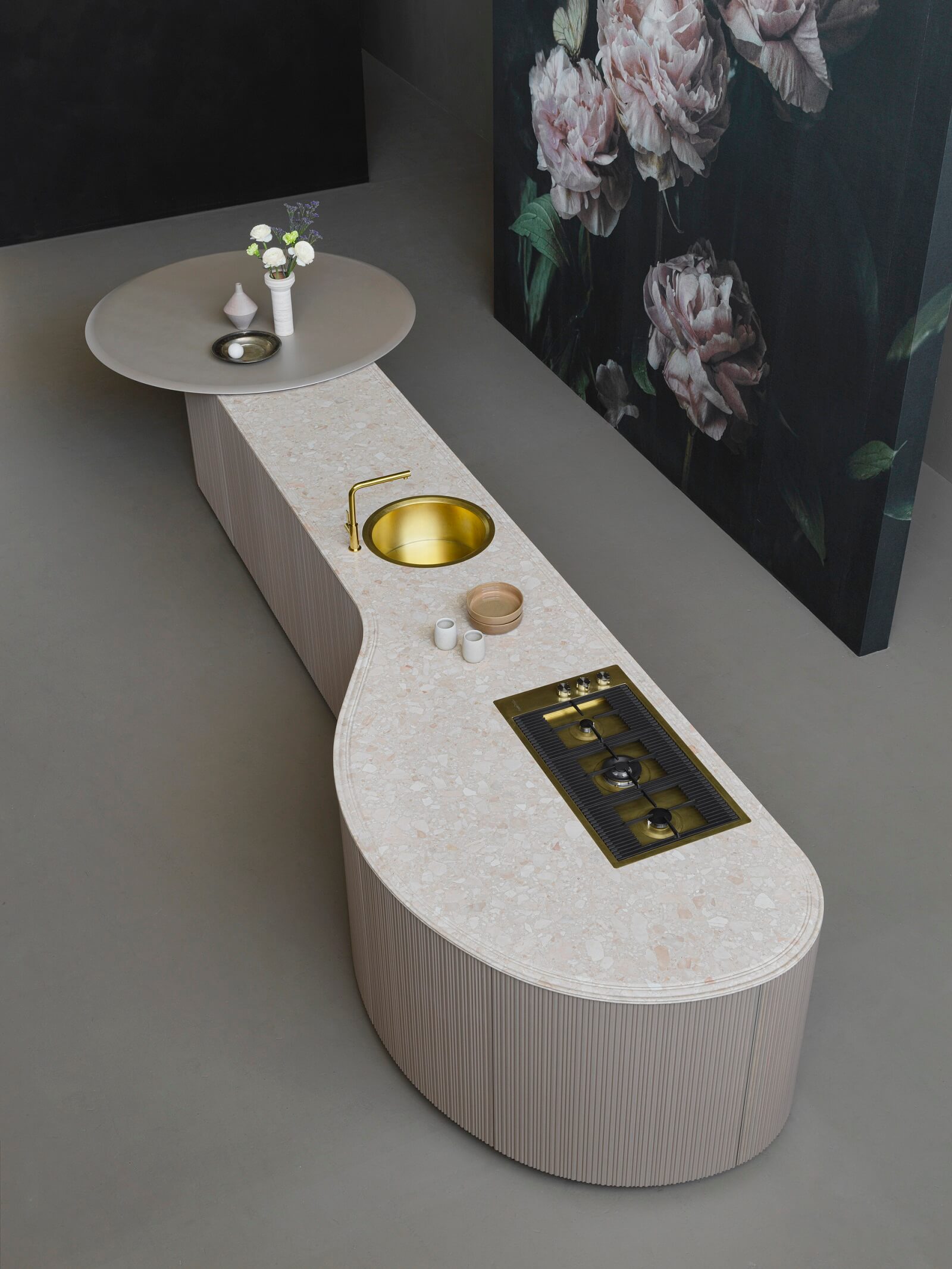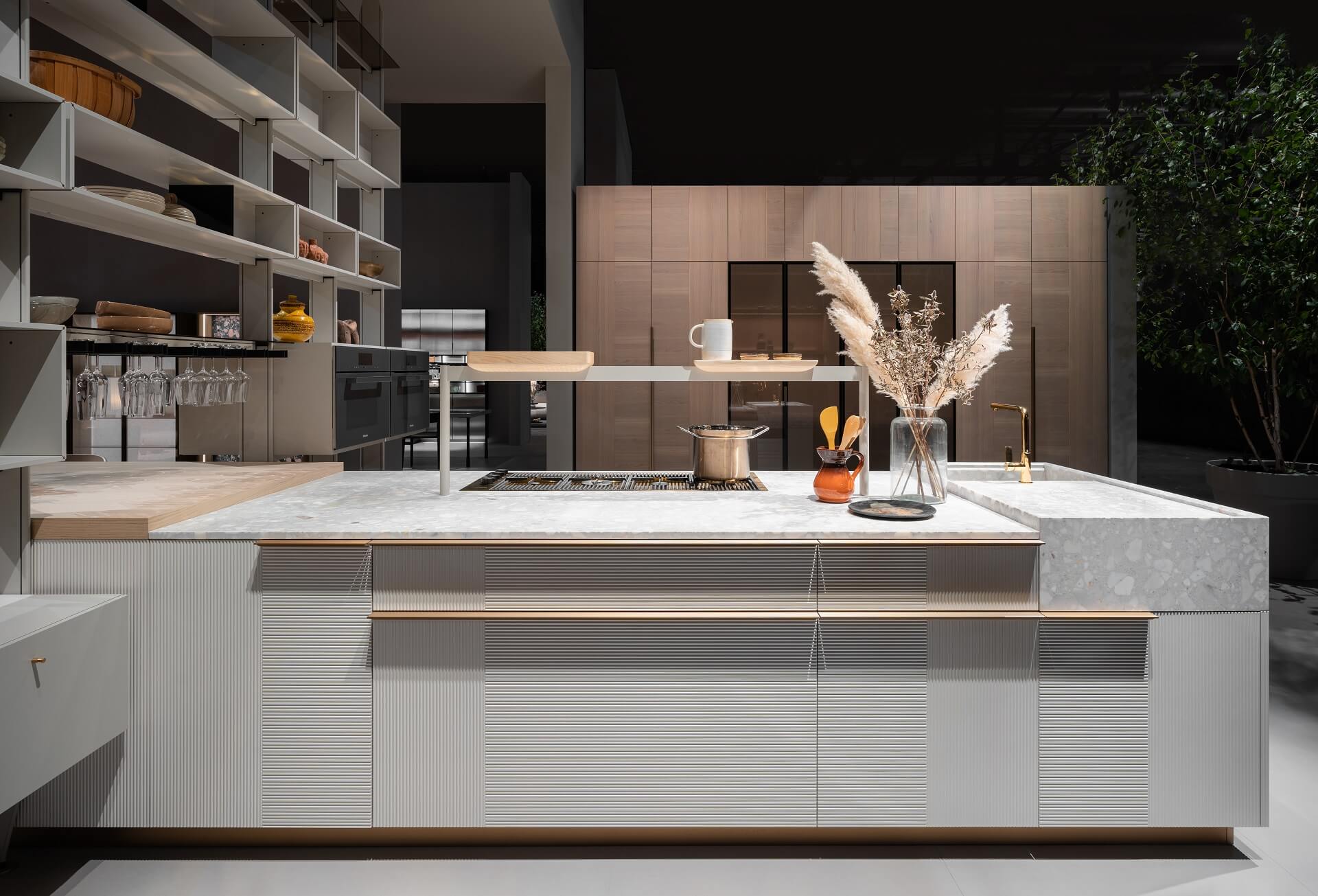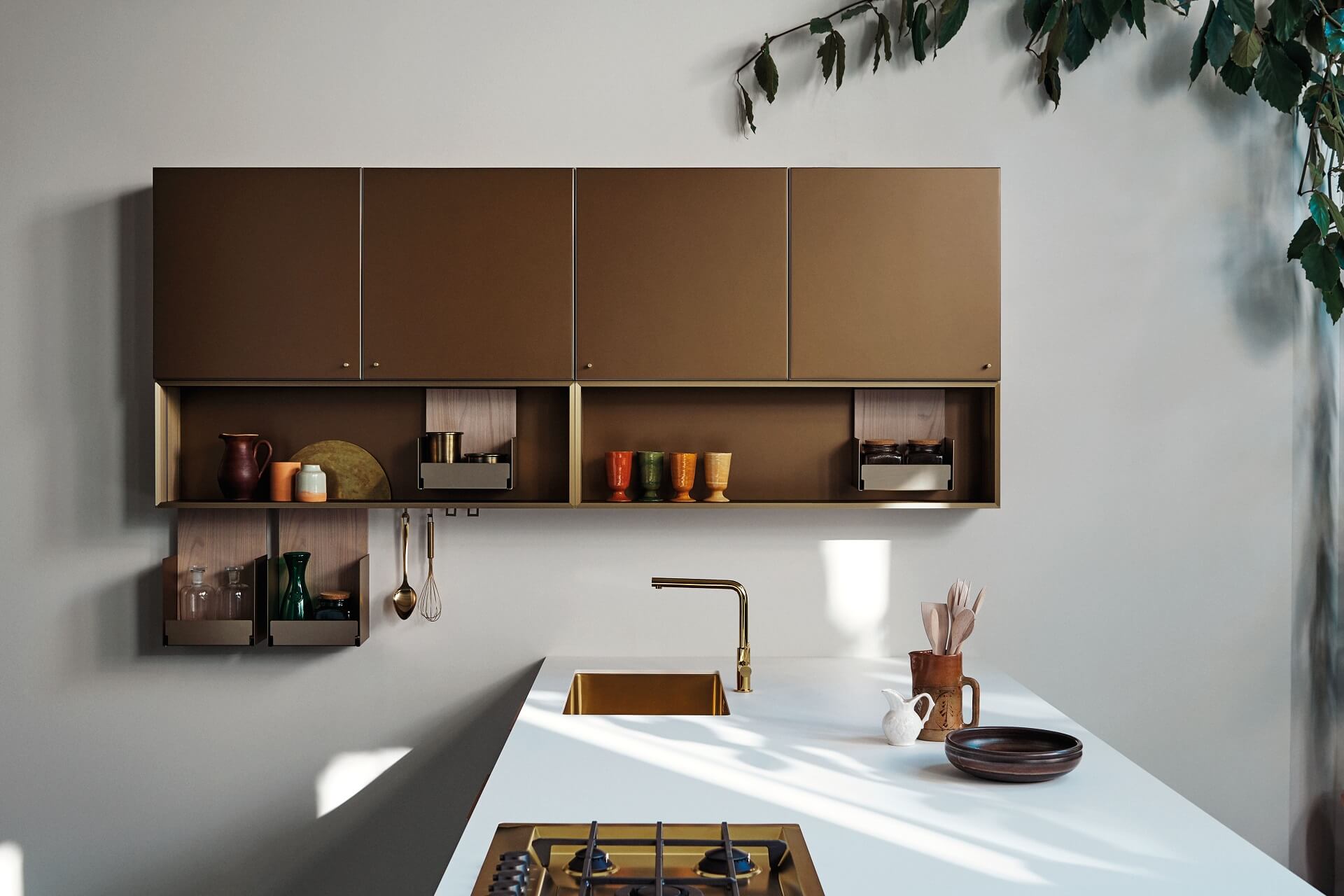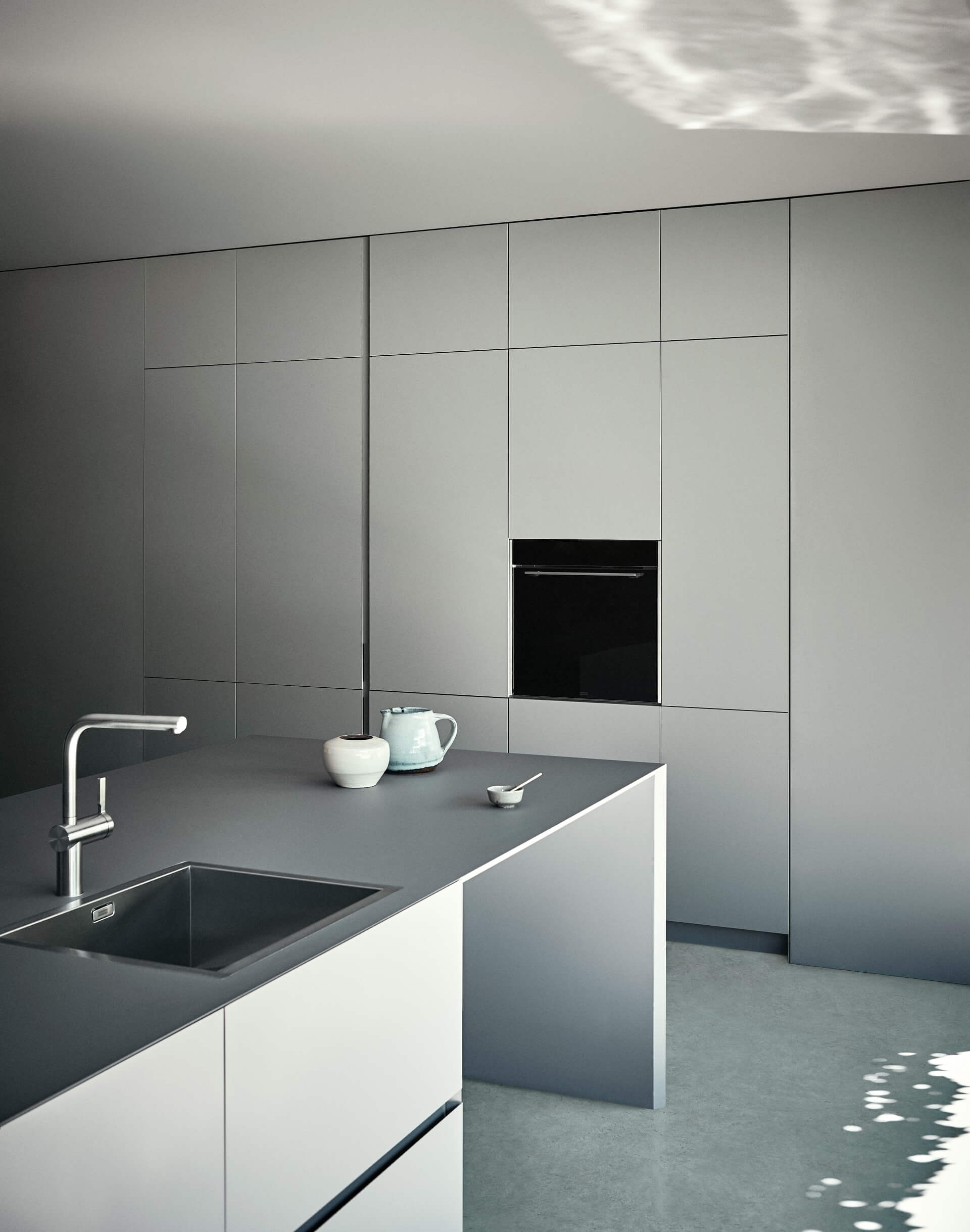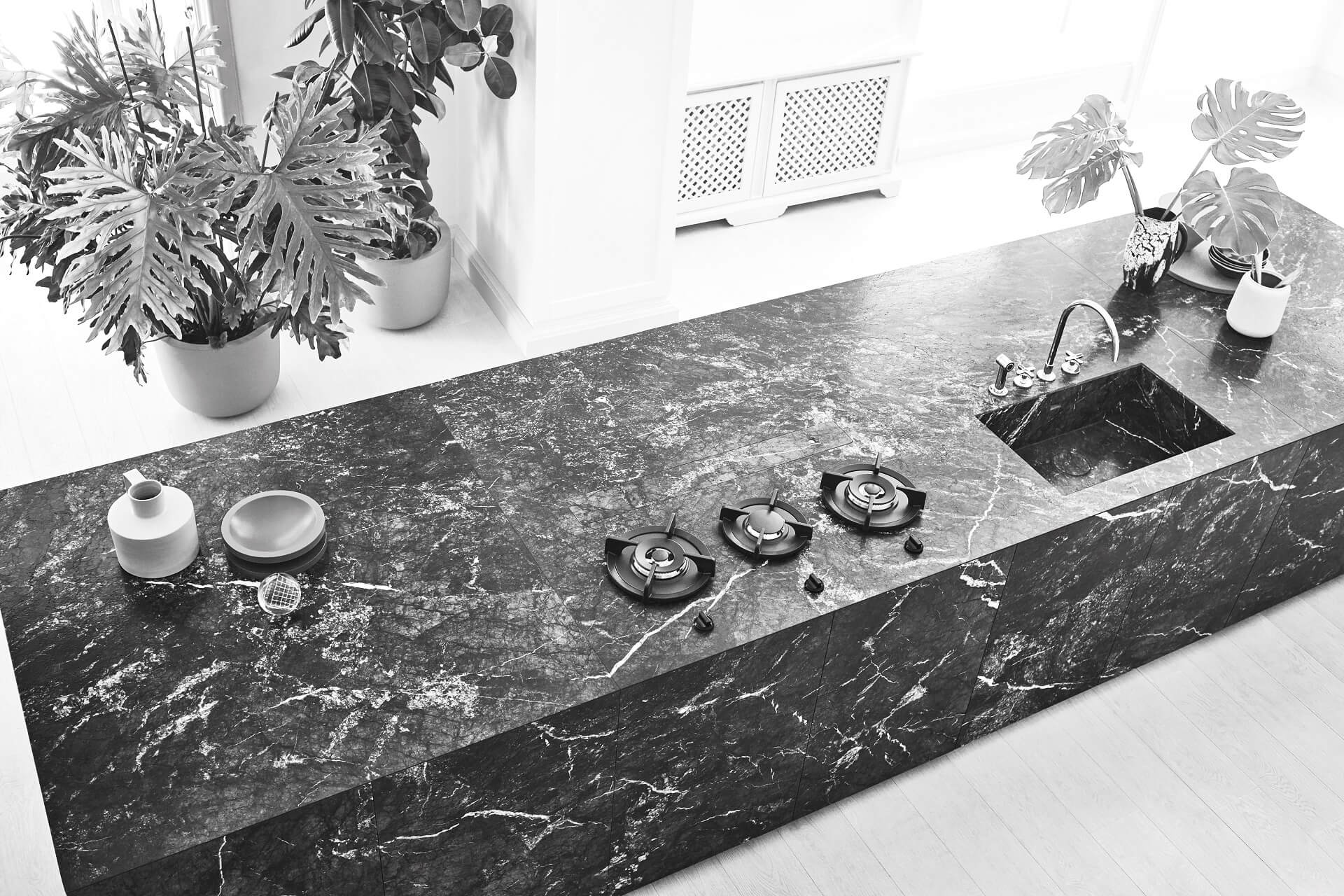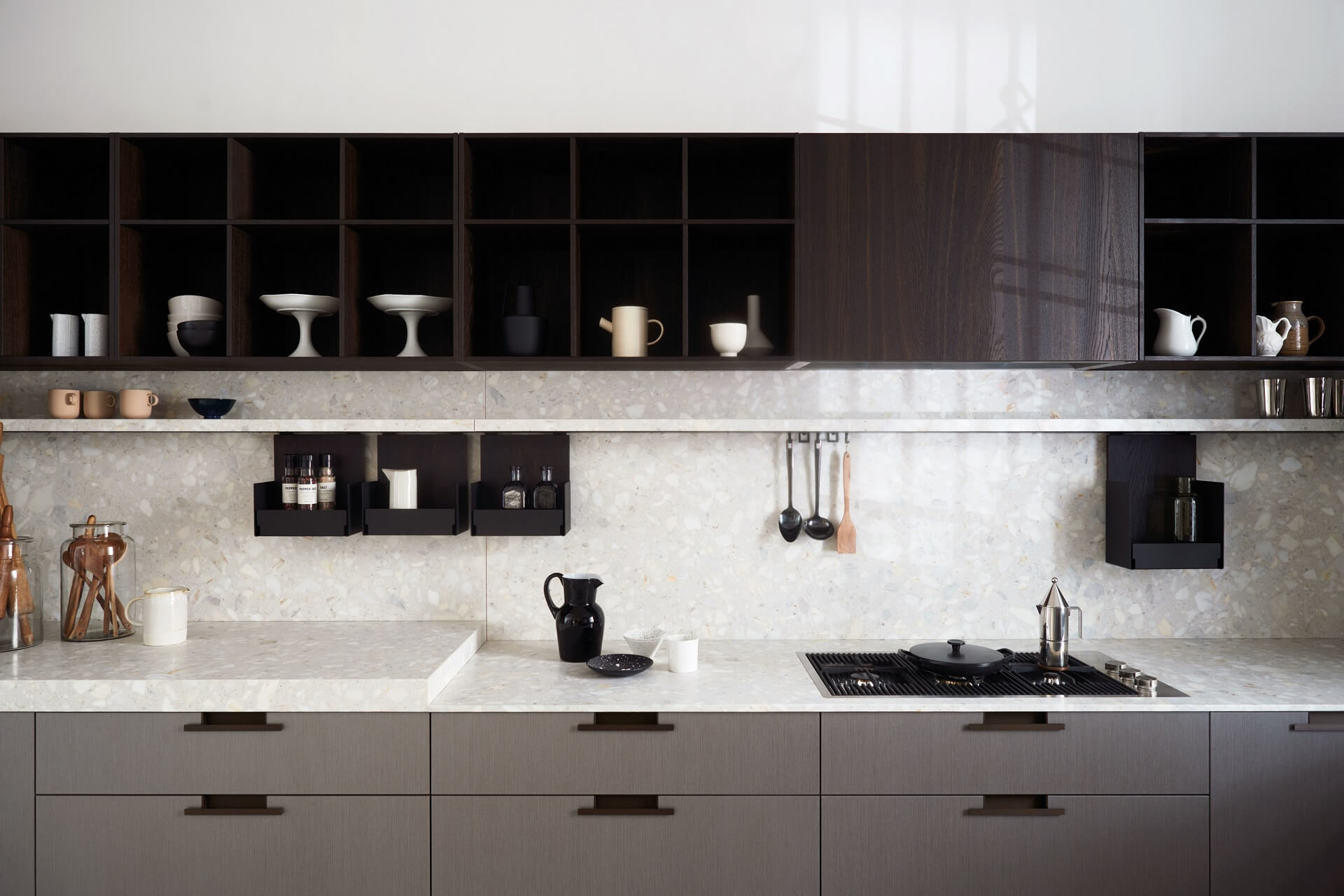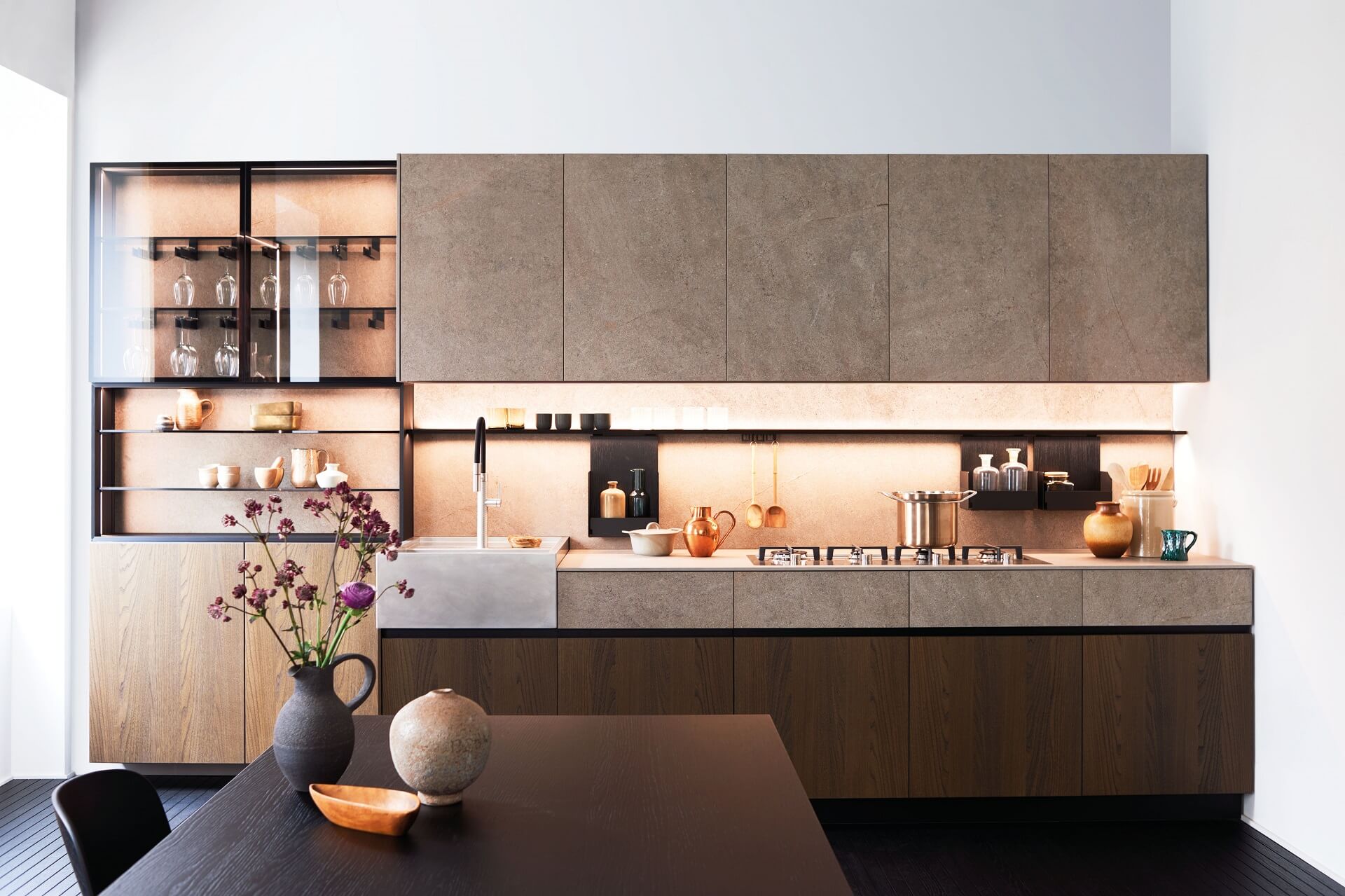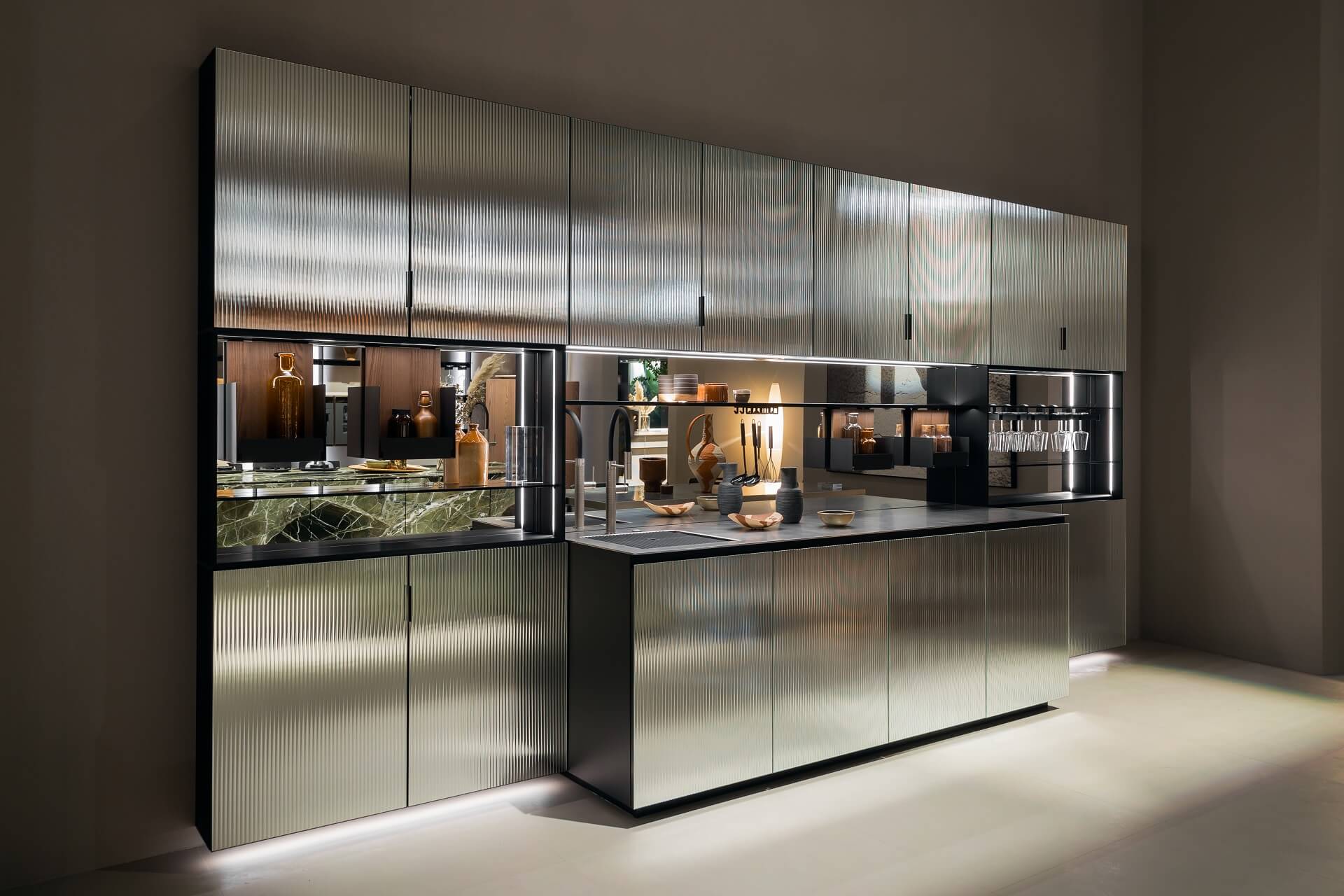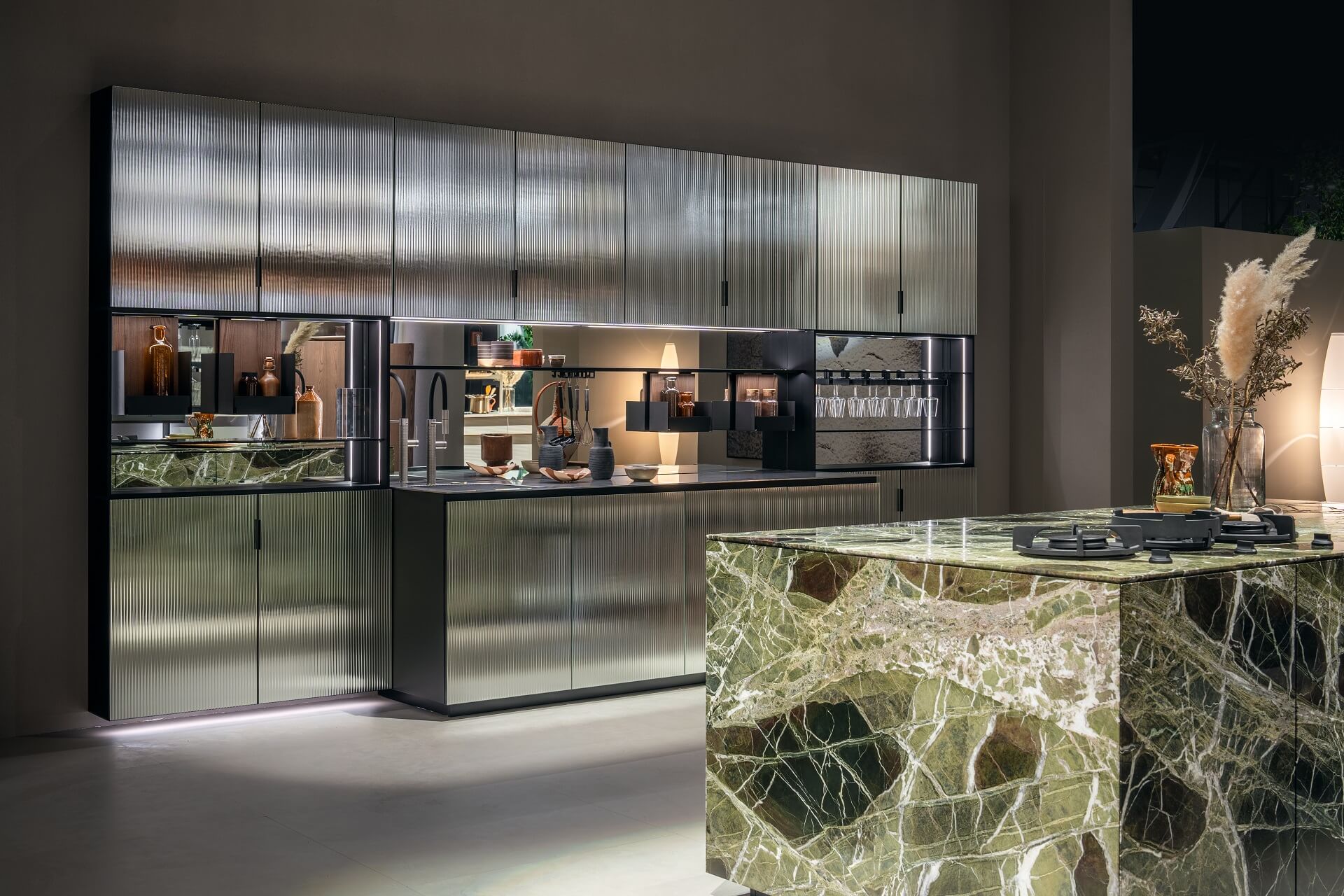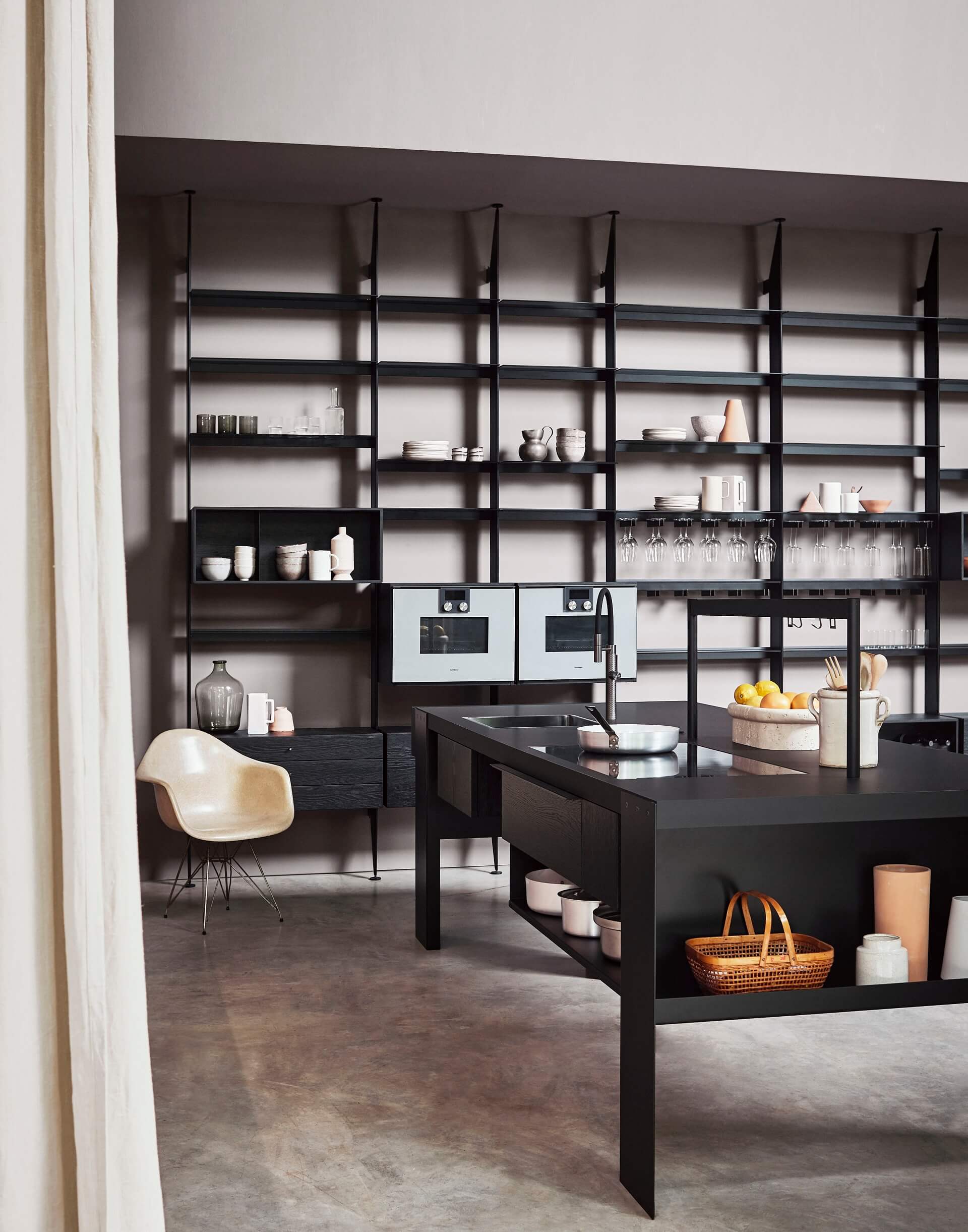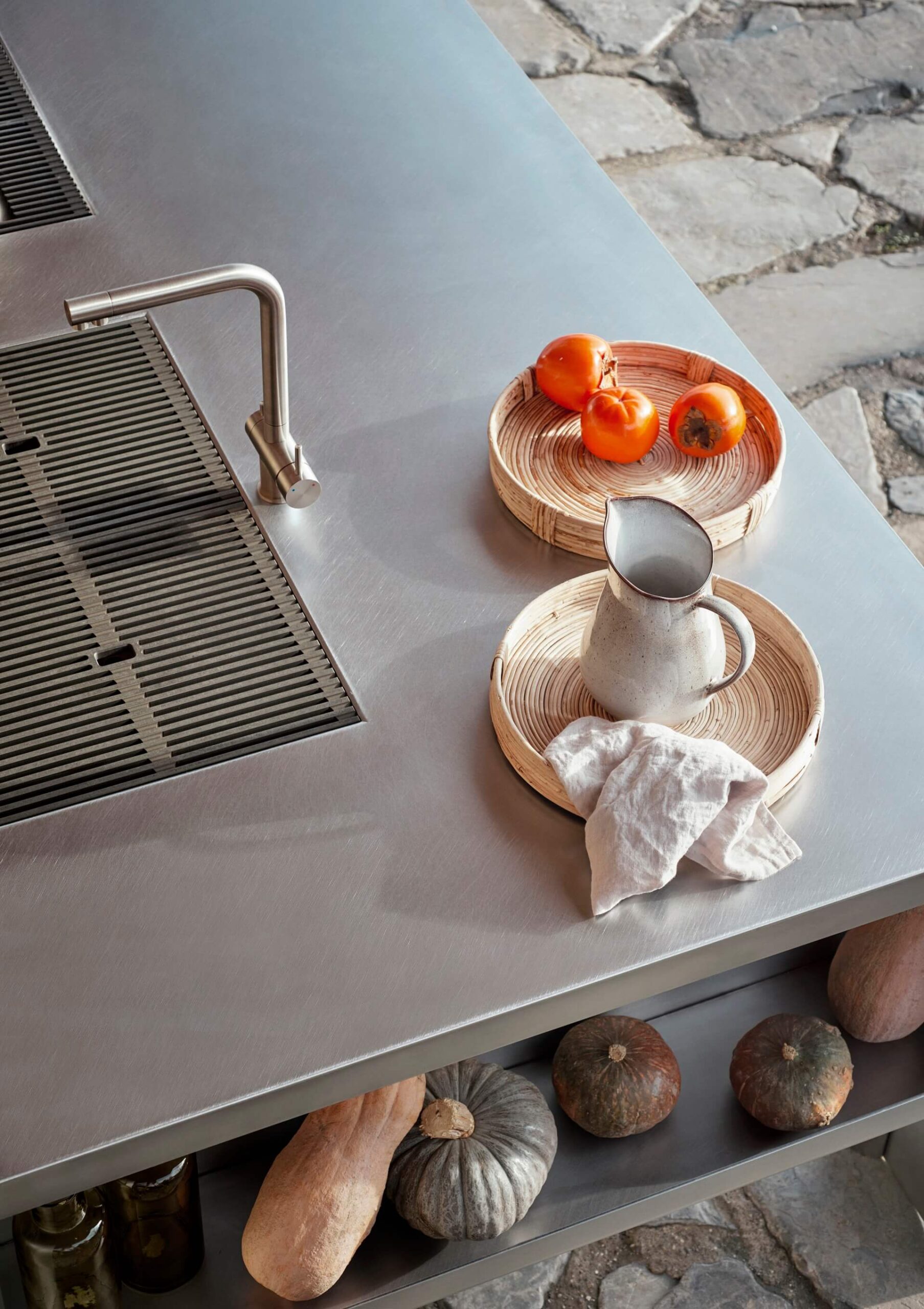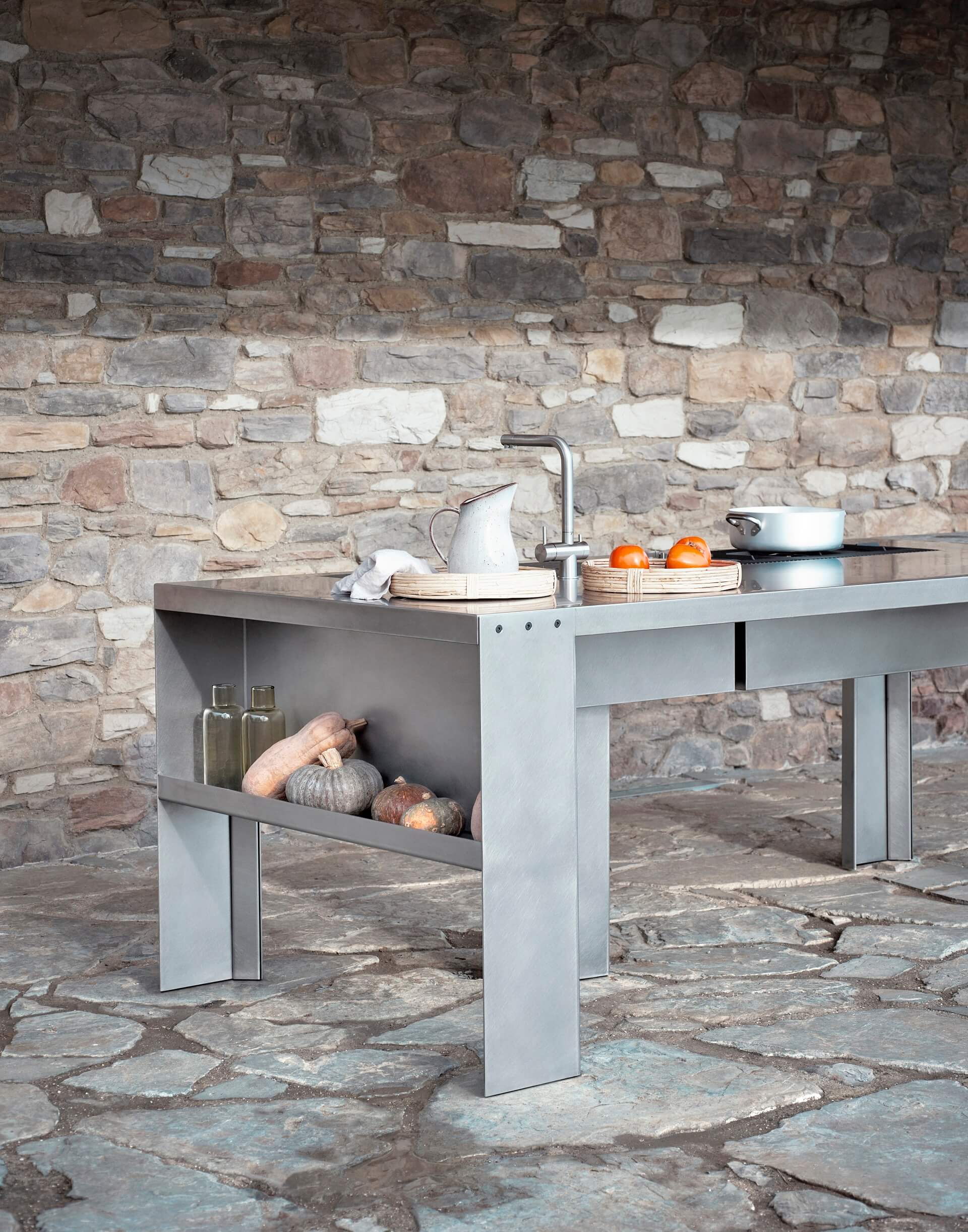A fluidity of spaces and transversality, a search for chromatic diversity and materiality: this is the underlying thread that unites Cesar’s collections.
Spaces no longer dictated by the subdivision of walls but created by the arrangement of elements that give continuity in the transition between the different areas of living, functionally divided, but at the same time united: overcoming walls and divisions, the kitchen, the living and welcoming soul of the home and its beating heart, is part of a unified project that extends from dining to living to outdoor.
It is an eclectic path that is not afraid of contrasts and exhorts to move freely from luminous lightness to preciousness of material, from light to darker hues, from masculine linearity to feminine sinuosity.
In particular, among the most relevant novelties, more decisive colors stand out, albeit within a palette that is confirmed as refined and exclusive, proposed on special processing of materials, which are open to the curve, three-dimensionality and relief.
Tangram Cesar
Tangram is the new Cesar project that, taking up the modular logic of the ancient Chinese game of geometric shapes that can be juxtaposed to form different figures, brings a new idea of sinuosity to kitchen design: avoiding all linearity, Tangram enhances the curve and its infinite combinatorial possibilities. To accentuate the fluidity of the composition, the door features a special 3D machining called Groove, composed of a sequence of vertical millings that create a pattern with an irregular rhythm. and the Tangram double-sided sideboard divides the room between the kitchen and living areas.
Bending to different needs, its eccentric shapes are not composed of simple semicircles or portions of a circle but follow a soft variable radius: in some places, for example, the shapes narrow so as not to take up too much space and facilitate passage.
Tangram consists of five curved elements that can be joined at will with straight door elements to build kitchen islands with unusual geometries, compositions leaning against walls or even solutions that embrace corners.
In addition, the collection is completed by the Tangram sideboard, which, wall-mounted or double-sided, can also be designed for living and dining environments, allowing to create fluidity and continuity in the transition between different areas of the house.
The 50’s Cesar
Underlining the infinite customization offered by Cesar is The 50’s wall-mounted system with open modules in a variety of colors and finishes.
Conceived and designed by Garcia Cumini, The 50’s is a contemporary reinterpretation of the bookcase and storage systems of the 1950s. Today, the model experiences a substantial evolution that extends its customization possibilities at both the modular and color levels. The uprights are now available in various colors that can be combined with each other in the most varied combinations, giving anyone the freedom to create their own exclusive lifestyle.
In addition, it has been revised and designed to integrate both the pantry column block and the columns dedicated to appliances, expanding and diversifying the design possibilities for column walls.
Equipped for the kitchen or chosen for the living and dining area, The 50’s is a multifaceted and multifunctional solution that fits spontaneously and naturally into the home, thanks to the finishes and compositional features, making it an individual and autonomous system, capable of creating, at the same time, a dialogue both between the areas of the home and between the individual products of the Cesar range.
Another novelty from Cesar is the wall-mounted furniture system, Mobilis, the result of a reworking of the iconic The 50’s: in fact, its components can now free themselves from the uprights and dress the walls in a wide variety of compositions, sometimes taking on greater weights.
Cesar Intarsio
Airiness of the composition, color novelties and elegant conceptual reworkings characterize the Intarsio system, available no longer only in wood but in luminous textured lacquer.
Today, in fact, Intarsio is further enriched thanks to chromatic novelties and elegant conceptual reworkings of the doors that reinterpret, in a contemporary guise, the juxtaposition of vertical and horizontal that has always distinguished this project: where before it was the wood grain that created the geometric pattern, now the protagonist is the elegant workmanship designed exclusively for Cesar by Garcia Cumini, which, with its parallel lines in relief, allows refined plays between light and shadow, giving great mobility to the whole. This processing is dressed in the different proposals of lacquers in Cesar’s palette, silk, textured and anodic.
The concept of Intarsio stems from the idea of deconstructing a two-dimensional surface of the doors, aiming to break and modify the aesthetic rendering, both in geometry and wood grain. The double decomposition highlights the skillfully researched harmonic play that Cesar is able to achieve in working with wood, a traditional material already valuable in itself, which is further ennobled to give the system the character of exclusivity that distinguishes it.
Dressup Cesar
Living and dining rooms can also be enriched by furnishing them with Dressup’s original arrangement that enhances its compositional flexibility: the modules are not placed side by side and joined in a block, but “exploded” and left free in the space to propose just a few of the countless design options for using the product.
Dressup is a project created to furnish in an innovative way the spaces between base and wall units in the kitchen, evolving into an innovative product to dress different areas of the home with creativity and elegance. Lightness and technology are the two inspiring principles that have made it possible to reverse the paradigm of drawer storage, which, from a traditional horizontal structure, is now developed vertically.
The element has a depth of only 22 cm and gives a perception of great airiness. With a wide development of its modularity, Dressup allows you to furnish every room in the house thanks also to the variety of finishes available the profiles are made of black, champagne and bronze aluminum, while the back can be chosen in the finishes of the Cesar palette, from melamine to fenix, from lacquers to ceramics, from marble to seeded. The module is also available with black, champagne and bronze aluminum frame doors, which can be dressed in different Cesar finishes.
The system also includes the Dressup Line variant, which is distinguished by the linear development of a combination of black, champagne and bronze millerighe aluminum back and shelf, connected by technological elements that are the result of Cesar research. Also innovative is the shelf covering system that allows for the combination of the finishes of the backrest and the shelf itself, which is available in marble and seeded.
In addition to the possible combination with the mirror, one of the most fascinating combinations of Dressup is the one that accommodates the proposals of the Art Collection, introducing a striking artistic element. The panel houses refined still lives of pictorial taste, works by Venetian photographer Zaira Zarotti.
N_Elle Cesar
The pearl of the new Cesar collections is the unprecedented N_Elle composition, in which the essential proportions of the monolithic island in Breccia Imperiale acquire maximum prominence thanks to the very special processing of the marble: Ipogeo, a new research by Margraf Innovation Lab exclusively in the kitchen sector for Cesar, enhances the natural veining of the stone and generates contrasts between polished and matte, bringing out colors and details that make the slab unique, as if it had just been extracted.
The N_Elle island, to which a steel Rook table has been juxtaposed, is paired with a composition composed of Maxima 2.2 and Dressup, characterized by a special cannulated finish on mirrored glass. On the other side stands out The 50’s full-height, designed so as to also integrate a pantry column block and one dedicated to appliances.
N_Elle was created to satisfy the continuous search for singular compositions in step with the times and strong material contrasts, naturally adaptable in the kitchen as in living environments, creating a solution of continuity between the two contexts.
The project is distinguished by rigor, clean forms and lightness, thanks to the use of 45-degree profiles that characterize the compositional elements. Particularly technological is the door version composed of the aluminum frame, 16 mm thick, coupled with the 6 mm thick fronts. This solution allows you to work with natural stone, sown and ceramic tiles.
The 45-degree angle of the compositions ensures the accentuation of the purity of the line, nullifying the thickness of the materials and originating unprecedented visual suggestions that find expression in the Monolith or Shark top.
In the brand new composition, the essential proportions of the Monolith island gain maximum prominence thanks to the marble treatment with which the entire structure is made. N-Elle, thanks to this finish that generates contrasts between glossy and matte, brings out colors and details that can make the slab unique, thus becoming a unique and unrepeatable work of art.
This extraordinary workmanship can be admired on the marble Breccia Imperiale, with which N_Elle is made: a precious natural singularity that presents a web of white veins on a background that veers from a darker to a lighter green, almost reminiscent of the vivid hues of the florid undergrowth soil that veers from a darker to a lighter green.
Maxima 2.2 Cesar
Maxima 2.2 is the design and creative system that stands out for its transversality and functionality combined with unique elegance, renewed now with exclusive compositions and solutions.
The model is characterized by the 2.2 cm thick door made in more than 160 finishes: from melamine to fenix, from essences to glossy and silk lacquers, metals, in the aluminum frame door version, from ceramics to polished and etched glass, and, as a novelty 2022, mirrored glass door.
The variety of solutions also affects the openings of the doors themselves, available with handles, grooves, sockets or with a push-pull system for an even more rigorous and clean aesthetic. This same wealth of finishes and details is further emphasized and strengthened by the possibility of enhancing Maxima 2.2 with the new Groove door model, characterized by 3D machining, and the Shaker door model, available in both lacquer and wood, adaptable either with a handle or with the push-pull opening system.
A rich and extremely curated offer, with selectable materials in different processing, elaborate colors and different surface treatments-as can be witnessed by a skillful combination of the top, in hot-rolled steel, textural and pleasant to the touch, with vertical elements in classic and durable stainless steel.
The evocative shots grouped into eight portraits, Cesar home elements, numerous finishes, and careful details make the Maxima 2.2 kitchen even more precious and customizable.
Among the artistic portraits presented, for a delicate and fresh solution, the doors in Technomat Meringa are combined with the Eero handle in Champagne color, and then continue the furnishing style with the layered worktop in Fenix Bianco Kos and the characteristic refrigerator and pantry columns in the new 75 cm modularity.
The island with worktop in Sahara Noir marble and doors in Tabià Nero, on the other hand, finds an elegant aesthetic result thanks to the unprecedented black knurled Pipe handle and the Comb organization system, a transversal element inside the Maxima 2.2 display case columns, suitable for both the kitchen and living areas.
Preferring a sharper color contrast, the worktop in Bianco Apuano seminato is in harmony with the Lutezio melamine doors and bronze-colored Ouverture handle, to be juxtaposed with the more intense Rovere Termocotto of the Trilli open modules and the Hide-and-seek system.
Finally, the doors with Frame grip, in Olmo Toscano finish and in MDi Inalco Moka Abujardado Jasper, represent a solution of great formal and stylistic simplicity, a harmonious compositional result in combination with the Dressup display case – with black frame and practical glass holder accessories – that chromatically recalls the Dressup Line structure with black profile and accessory with Corvino Oak back.
Silk, textured and anodic lacquer finishes are now available in new hues: Comodoro Green, Fes Blue, Jaipur Red, Brac Green.
Unit Pocket Cesar
The Unit model comes with many new features, extending its functionality and making it perfect for a metropolitan living concept and suitable for the new daily living needs of multiple personalities brought to coexist in sometimes confined and versatile spaces.
Unit Pocket, one of the 2022 novelties, is a system that groups base, island and columns in a single piece of furniture, and is available in the traditional single-sided or double-sided version, designed both for the kitchen area and for living or dining.
In fact, Unit Pocket offers in a single compact composition all the indispensable functions in the kitchen: storage, washing, cooking and food preservation. This feature allows it to adapt to generous spaces, as well as more daring and challenging places to design.
Two versions are available: a more traditional one, designed for living next to the wall, and a double-sided version with a large portal that allows for a window of communication between spaces. In fact, the two sides of Unit Pocket can have different functions, one kitchen and the other living or dining.
Unit Pocket thus becomes the perfect symbol of that dialogue between different areas of the home that encourages a fluid lifestyle, for which the kitchen still remains the center of sociality, a privileged meeting point for family and friends.
Williamsburg Cesar
Williamsburg, in the area designed for outdoor, complements the ceramic top with new vintage steel sideboards designed by Garcia Cumini and made by the Foster brand for Cesar. As a transversal element of the Cesar mood, Williamsburg creates a bridge that connects the interior and exterior spaces.
The system is structured in a central work area, an operating counter that links structural strength and aesthetic lightness. Among Cesar’s home elements, Williamsburg is specially designed in its details and details both to facilitate those who work in the kitchen and to make it comfortable to sit around a table in a convivial moment, without cluttering under the surface top.
The union of strength and simplicity is among the main and distinctive features of Williamsburg, inspired by the industrial world, but at the same time able to find its way to more domestic environments: in fact, the structure recalls the architectural image of a modern bridge, a source of inspiration for designers thanks to the presence of solid side pillars connected by a longitudinal element.
In the version made of ceramic and AISI 316 stainless steel, Williamsburg, designed to be placed in an outdoor area, is now enriched with the new vintage steel sideboards designed by Garcia Cumini, whose diamond effect of the doors is reminiscent of the workings of large industrial doors.
The double realization of Williamsburg, conceived both efficiently for an indoor context and for a pleasant outdoor situation, is intended to emphasize the value Cesar places on the communicative harmony between the kitchen area and the other environments of daily living, conceived and designed with the same exclusive design, creating a bridge that connects the interior and exterior spaces.


